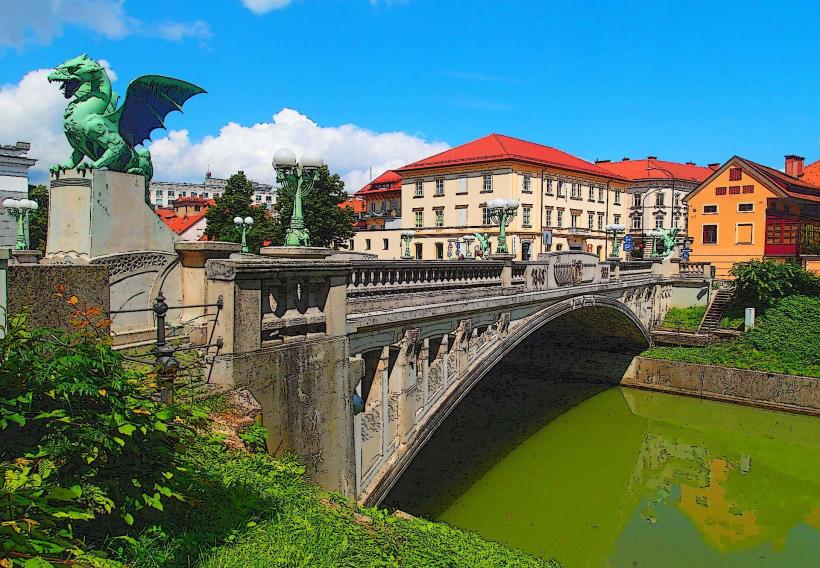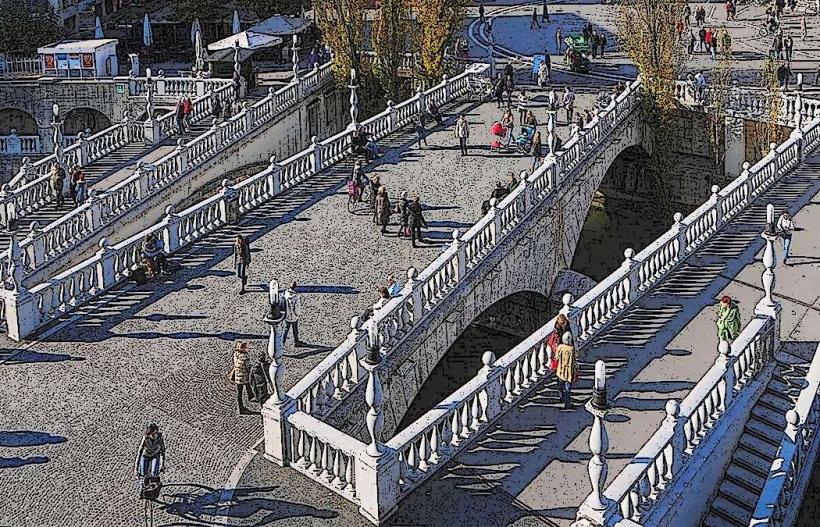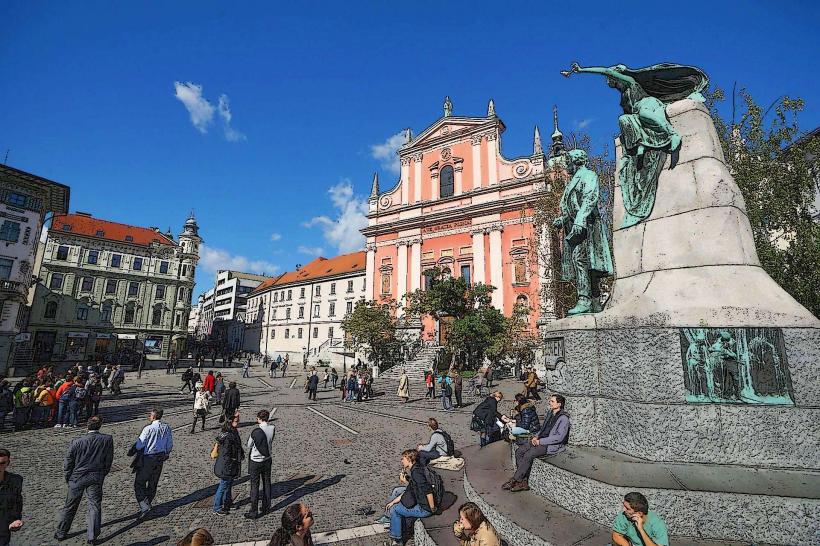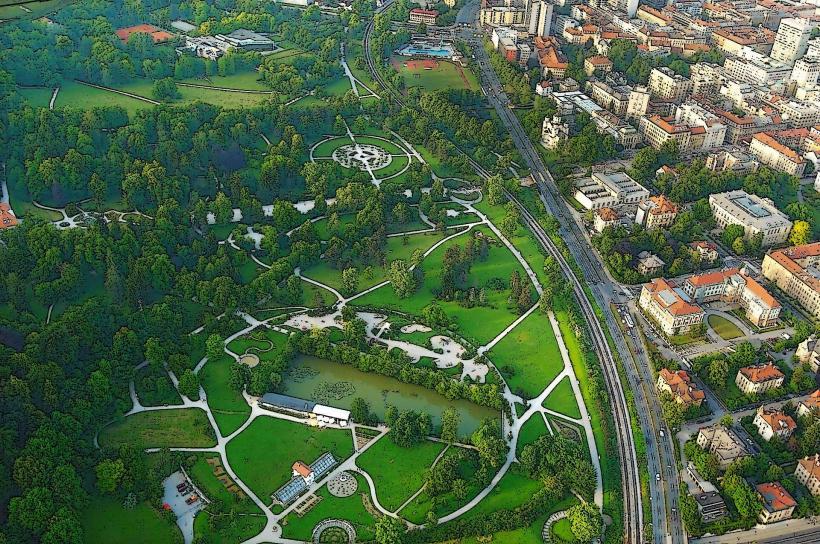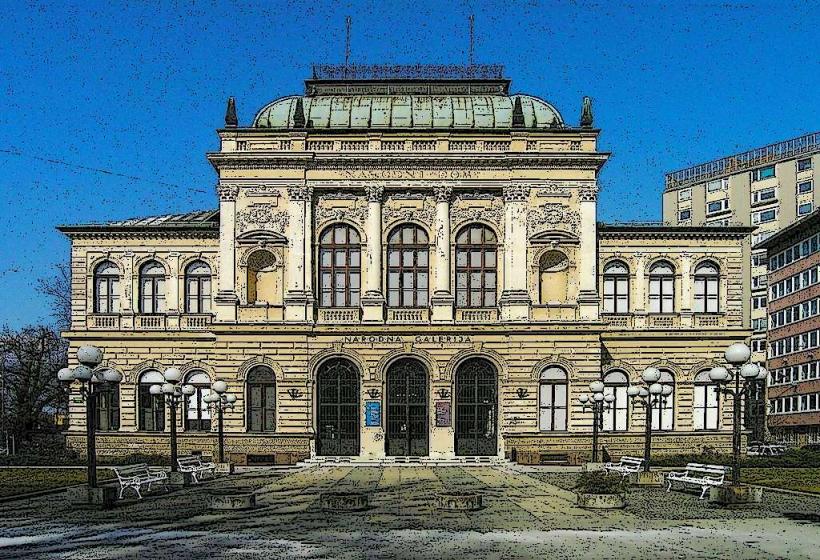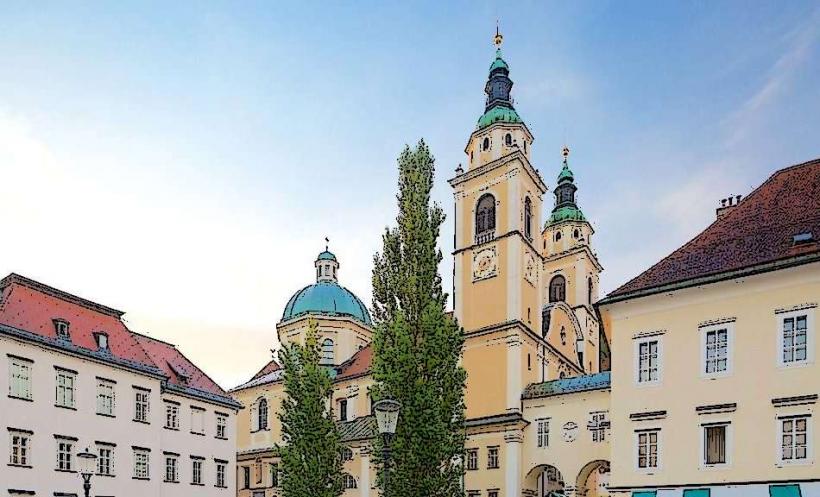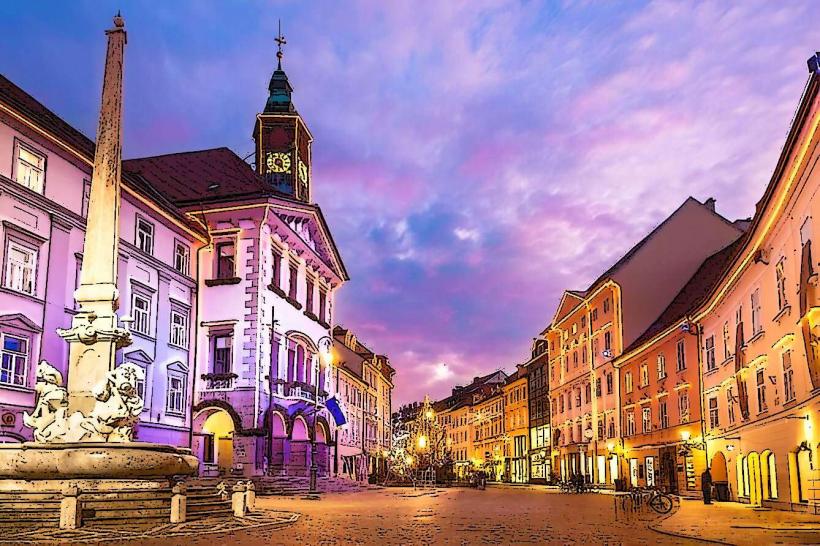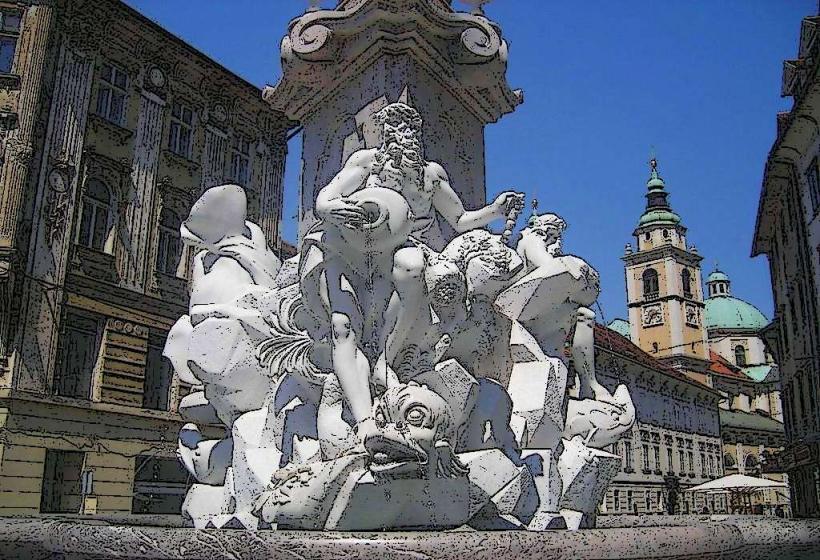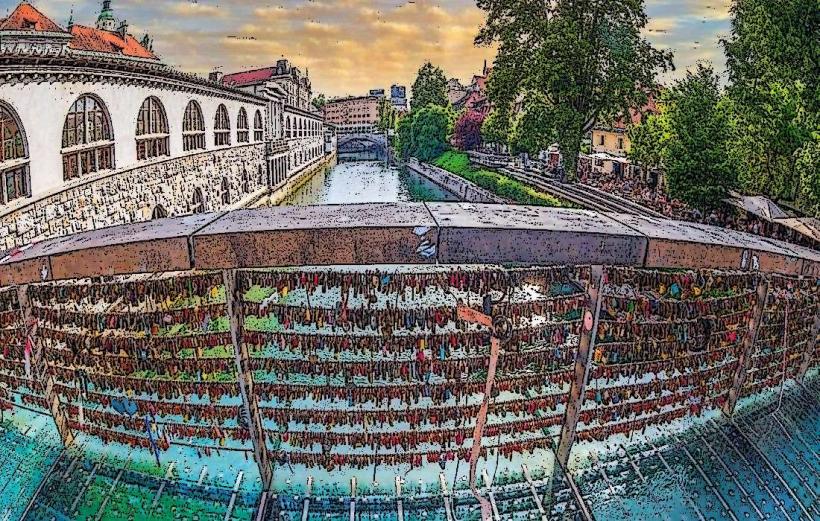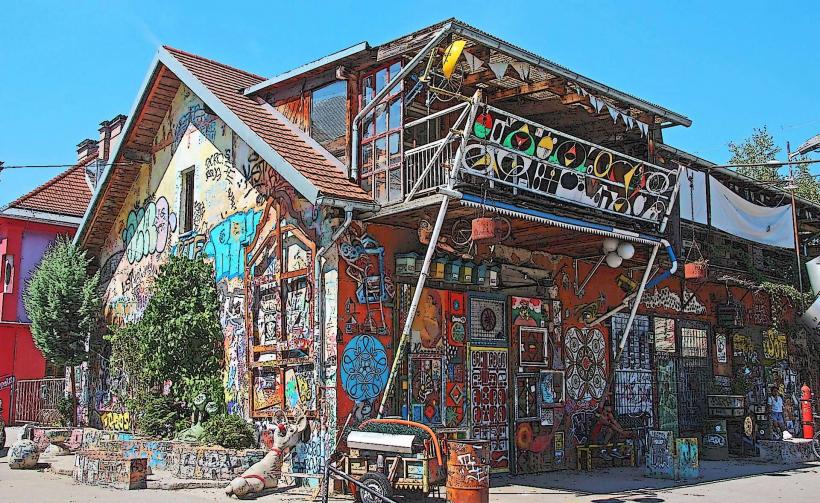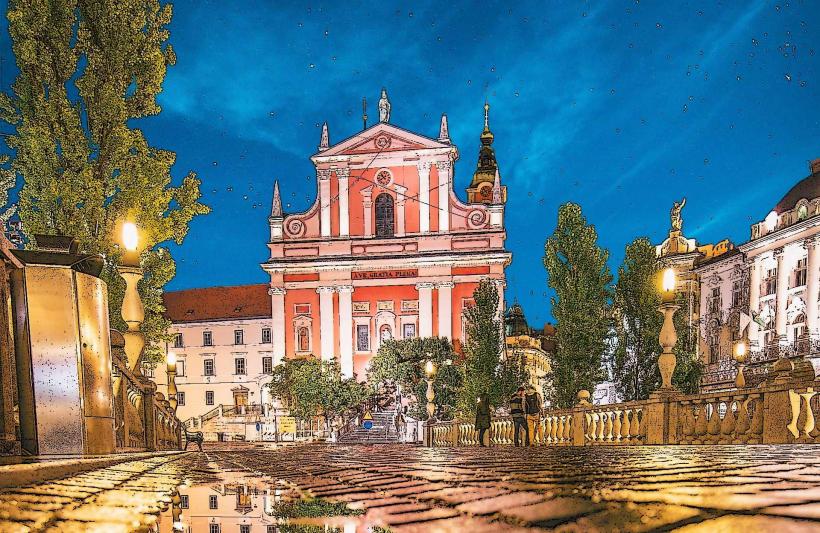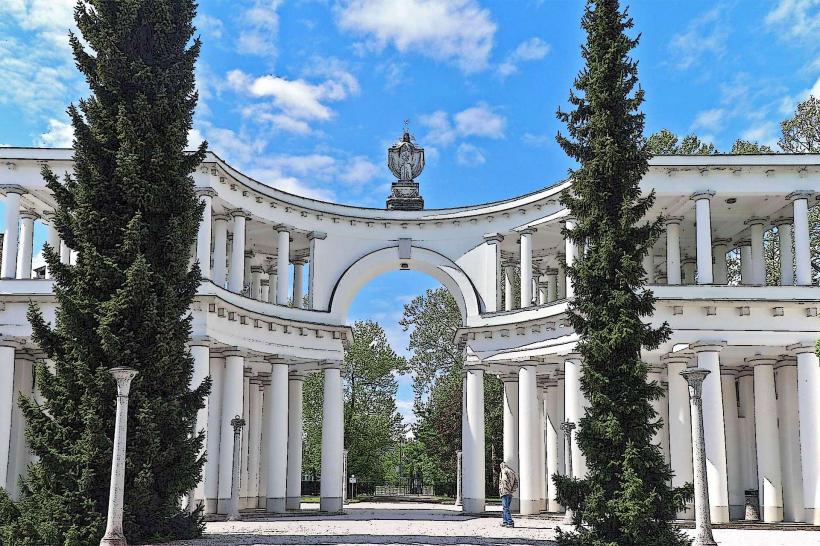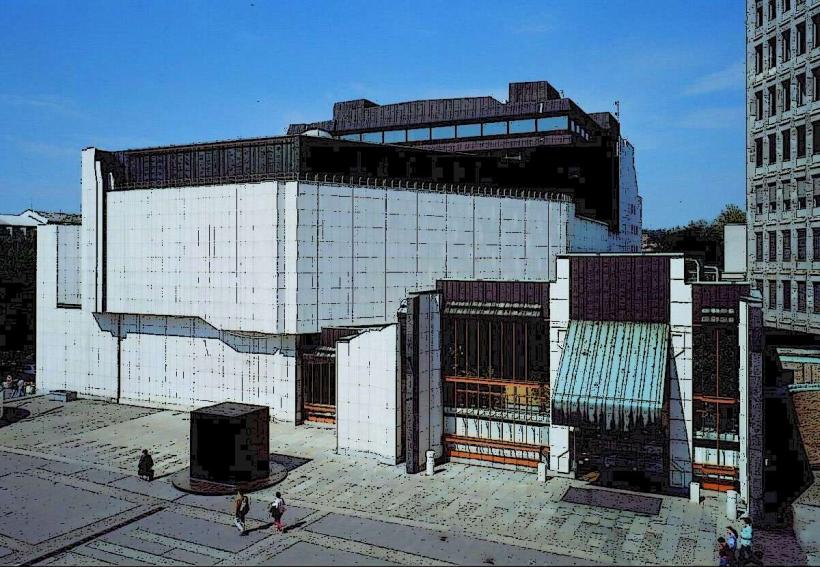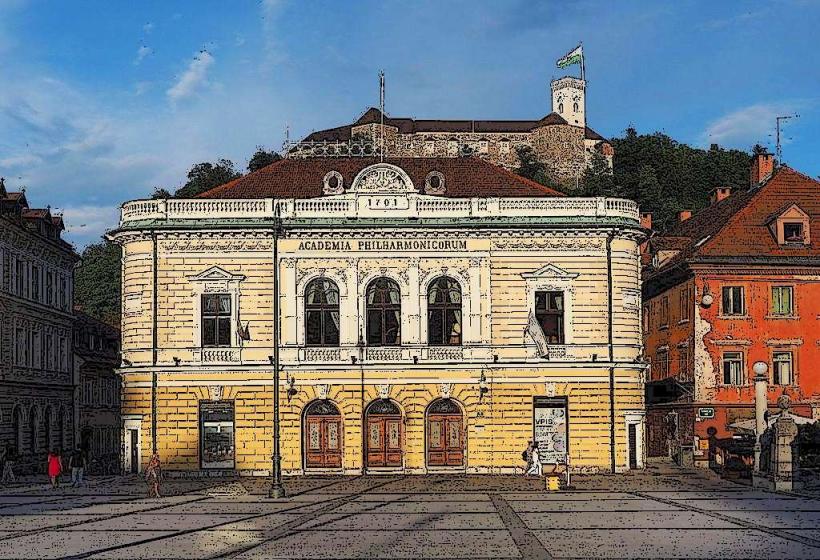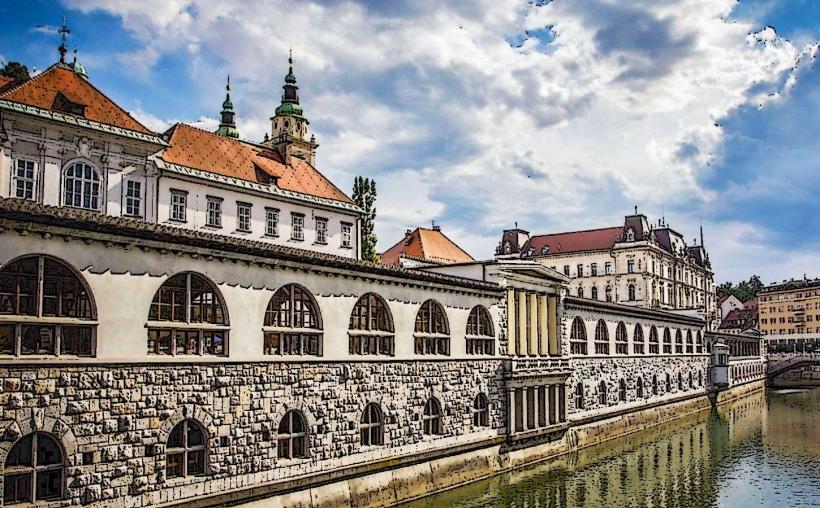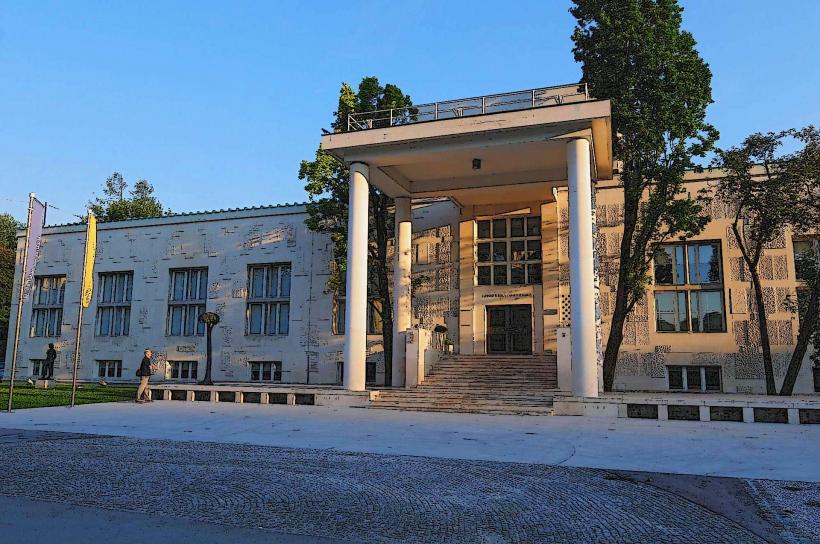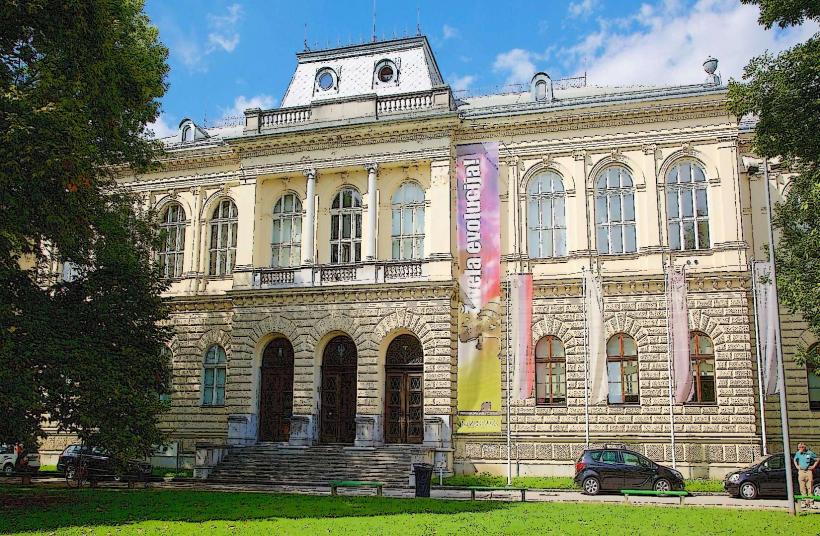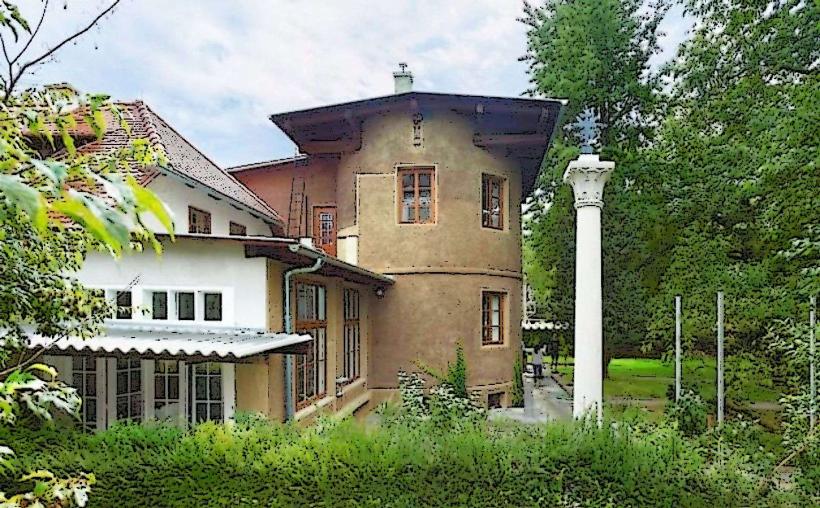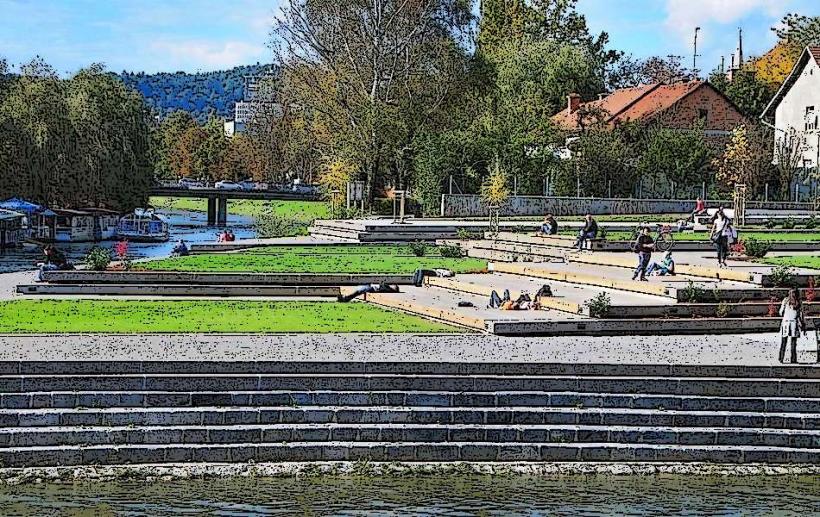Information
Landmark: Ljubljana CastleCity: Ljubljana
Country: Slovenia
Continent: Europe
Ljubljana Castle (Ljubljanski grad) is one of Slovenia's most prominent historical and cultural landmarks. Situated on Castle Hill above the city of Ljubljana, the castle offers stunning views of the city and the surrounding landscapes. It has a long and rich history that dates back to medieval times, and today it serves as a major tourist attraction, museum, and cultural venue.
General Overview
- Location: The castle is located on a hill at an elevation of about 375 meters (1,230 feet) above sea level, offering panoramic views of Ljubljana and the surrounding region.
- Coordinates: 46°02′31″N 14°30′42″E
- Elevation: 375 meters (1,230 feet) above sea level.
- Accessibility: The castle can be reached by a funicular (a cable car system), walking paths, or road access. The funicular is a popular choice, offering a quick and scenic ascent.
History
Early Beginnings
- Prehistoric and Roman Periods: Evidence of early settlements on Castle Hill dates back to prehistoric times, with archaeological findings suggesting that the hill was inhabited during the Bronze Age. The site likely served as a fortified settlement for local tribes.
- Medieval Era: The first written record of the castle dates back to the 12th century, when it was referred to as a fortress. During this period, the castle became an important military stronghold and played a central role in defending the region from invaders. It was first mentioned in 1144 and belonged to the noble families of the region, including the Counts of Andechs.
Habsburg Era
- 15th–16th Century: In the 15th century, the castle came under the control of the Habsburg monarchy, which significantly expanded and strengthened its fortifications. The castle became a center of administration and governance for the region, and its strategic location made it an important military outpost.
- Castle’s Role: During the 16th century, Ljubljana Castle continued to be an important fortress for the Habsburgs. The castle walls were reinforced and a large gate tower was constructed to defend against invaders.
18th–19th Century
- Austrian Empire: In the 18th century, the castle’s military role diminished, and it began to serve as a residence for the ruling aristocracy. It was during this period that the baroque-style chapel and the castle's iconic tower were built.
- Napoleonic Era: During the Napoleonic Wars, the castle was occupied by French troops when Ljubljana was under French rule. After the defeat of Napoleon, the castle returned to Austrian control.
20th Century and Independence
- 20th Century: By the early 20th century, the castle began to lose its importance as a military structure. It was used for various purposes, including a prison, and later became the site of several cultural and public events.
- Post-Independence: Following Slovenia’s independence in 1991, Ljubljana Castle became a symbol of national pride and a major cultural heritage site. Today, it serves as a museum and a venue for art exhibitions, theatrical performances, and music events.
Architecture
The architectural style of Ljubljana Castle reflects its long history, with various periods of construction and renovation influencing its design.
Castle Walls and Towers
- Fortifications: The castle’s walls are made of stone and feature large, robust battlements. The walls once provided protection against potential invaders, and sections of them remain well-preserved today. The entrance tower is one of the most iconic parts of the castle, providing a view over the main courtyard and the surrounding area.
- The Keep: The central part of the castle, known as the keep, is the oldest section and houses a museum and exhibition space. It dates back to the 12th century and has been expanded over the centuries to its current form.
Chapel of St. George
- The Chapel of St. George (Cerkev sv. Jurija) is located within the castle complex and was built in the 15th century in the Gothic style. It features stunning frescoes and a baroque altar, which were added in the 17th century.
The Tower
- The Viewing Tower is one of the main features of Ljubljana Castle. Standing tall at 20 meters (66 feet), it offers 360-degree views of the city and surrounding landscapes, making it one of the best places to view the Ljubljana skyline and the Alps.
Baroque Elements
- Several parts of the castle, including the chapel and the entrance hall, feature Baroque-style elements. These were added during the 18th century, a period of relative peace and cultural growth under the Habsburgs.
Current Use
Today, Ljubljana Castle is an important cultural and tourist center in the city. It is home to several exhibitions, events, and museum spaces.
Museum and Exhibitions
- The castle hosts the Museum of Ljubljana, which offers a variety of exhibits focused on the history and cultural heritage of the city. The museum displays artifacts from the medieval to the modern era, including archaeological finds, art, and historical documents.
- The Virtual Castle exhibition allows visitors to explore the castle’s history through interactive displays and 3D projections, offering a unique view of how the castle has evolved over the centuries.
Cultural Events
- Concerts and Performances: The castle is a popular venue for concerts, particularly classical music performances, theatrical shows, and art exhibitions.
- Weddings and Celebrations: The castle is also a popular location for weddings and private events due to its picturesque setting and historic ambiance.
- Public Events: Throughout the year, Ljubljana Castle hosts festivals, medieval reenactments, and open-air cinema nights.
Restaurant and Café
- The castle also has a restaurant and cafés, offering a variety of Slovenian dishes and drinks, including local wines and traditional Slovenian cuisine. The panoramic terraces allow visitors to enjoy a meal with an impressive view of the city.
Key Attractions
- Funicular Ride: The funicular that takes visitors up to the castle is a fun and scenic experience. The funicular railway was built in 2006 and offers a quick and comfortable ride to the top, with views of the city unfolding as the train ascends.
- Castle Courtyard: The central courtyard of Ljubljana Castle is open to visitors, where they can walk around and enjoy the castle's historical ambiance. The courtyard is often used for cultural events and outdoor performances.
- Panoramic Views: The viewing tower at the top of the castle offers a stunning, 360-degree view of Ljubljana, the Ljubljanica River, and the surrounding countryside, including the Alps to the north.
Visitor Information
- Opening Hours: Ljubljana Castle is typically open year-round. The exact opening hours may vary depending on the season, so it's recommended to check in advance.
- Tickets: Entrance to the castle is usually ticketed. There are various ticket options for accessing different areas, including a combined ticket for the castle's museum and the funicular ride. Visitors can also purchase a family ticket or group tickets.
- Accessibility: The castle is accessible to visitors with disabilities, with elevators available to access higher floors.
Conclusion
Ljubljana Castle is a must-visit landmark in the city, offering a fascinating combination of historical significance, architectural beauty, and breathtaking views. Whether you're interested in exploring its medieval roots, learning about its role in Slovenian history, or simply enjoying the panoramic vistas, Ljubljana Castle provides an enriching experience for all visitors.

